Powder Crystals Granules Pallets Lumps Solution Calcium Chloride Anhydrous Fused Dihydrate Hexahydrate BP Ph Eur USP Reagent FCC Food Grade & Calcium Carbonate BP Ph Eur USP Reagent FCC Food Grade Suppliers Exporters, Manufacturers
Calcium Chloride
CAS Number: 10043-52-4, 10035-04-8, 7774-34-7 Anhydrous Fused Dihydrate Hexahydrate Powder Crystals Granules Pallets Lumps Solution BP Ph Eur USP Reagent FCC Food Grade Suppliers Exporters, Manufacturers
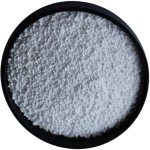
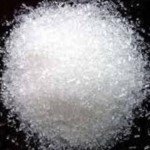
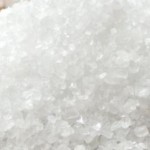
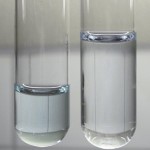
Please visit Safety Data Sheet of Calcium Chloride BP Ph Eur USP Reagent FCC Food Grade Manufacturers.
CaCl2- Calcium Chloride Pharma Grade
Assay: 93% minimum CaCl2 Calcium Chloride Anhydrous or 97 to 103% as CaCl2-2H2O Di-hydrate
Arsenic: 0.0003% maximum
Lead (Pb): 0.001% maximum
Heavy Metal as (Pb): 0.0003% maximum
Magnesium/Alkali: 1% maximum.
Clarity of 10% Solution: Clear & Colorless.
Free Acid or Alkali: 0.005% maximum & pH 4.5-9 or 0.2ml of 0.01M HCl/NaOH to 10ml of 10%.
Calcium Chloride Hexahydrate (EXTRA PURE)
CaCl2.6H2O EXTRA PURE Analytical Reagent Specifications
Assay as Calcium Chloride Hexahydrate: 99%-101%. as CaCl2-6H2O Calcium Chloride Hexahydrate
Free Acid or Alkali: 0.005% maximum as HCl OR Ca(OH)2.
Sulphate (SO4): 0.01% maximum.
Iron: 0.001% maximum.
Magnesium: 0.05% maximum.
Calcium Chloride Solution or Calcium Chloride Refrigeration Brine Grade
A Brine may be defined as liquid of low freezing point used in transmission of refrigeration without change of state. The brines commonly employed in refrigeration are Calcium Chloride CaCl2 and Sodium Chloride. Sodium Chloride is cheaper but cannot be used below minus 15C. CaCl2 of commercial grade can operate satisfactorily up to minus 40C. Use of CaCl2 above 33% should be avoided as it results in crystallization resulting in reduced efficiency. The CaCl2 selected should be adjusted to pH of around 8 and it should be free from free-acid and dirt. Colored material should not be used as it results in corrosion and scaling of the tubes. For the same reason by-product CaCl2 is not desirable as it contains Organic Chlorides which may break into Hydrogen Chloride.
Calcium Chloride BP Ph Eur Dihydrate Grade Specifications
CaCl2-2H2O
DEFINITION
Content: 97.0 per cent to 103.0 per cent of CaCl2-2H2O.
CHARACTERS
Appearance: White or almost white, crystalline powder, hygroscopic.
Solubility: Freely soluble in water, soluble in ethanol (96 per cent).
IDENTIFICATION
Solution S (see Tests) gives reaction of chlorides.
It gives the reactions of calcium.
It complies with the limits of the assay.
TESTS
Solution S: Dissolve 10.0 g in carbon dioxide-free water prepared from distilled water and dilute to 100 ml with the same solvent.
Appearance of solution: Solution S is clearand not more intensely colored than reference solution.
Acidity or alkalinity: To 10 ml of freshly prepared solution S add 0.1 ml of phph solution. If the solution is red, not more than 0.2 ml of 0.01 M hydrochloric acid is required to discharge the color and if the solution is colorless, not more than 0.2 ml of 0.01 M sodium hydroxide is required to turn it red.
Sulphates: Maximum 300 ppm.
Aluminium: To 10 ml of solution S add 2 ml of ammonium chloride solution R and 1 ml of dilute ammonia and boil the solution. No turbidity or precipitate is formed.
If intended for use in the manufacture of dialysis solutions, the above test is replaced by the test for Aluminium maximum 1 ppm.
Barium: To 10 ml of solution S add 1 ml of calcium Sulphate solution R. After at least 15 min, any opalescence in the solution is not more intense than that in a mixture of 1 ml of distilled water and 10 ml of solution S.
Iron: Maximum 10 ppm, determined on solution S.
Magnesium and alkali metals: Maximum 0.5 per cent.
Heavy metals: Maximum 20 ppm.
Calcium Chloride Hexahydrate BP Ph Eur Grade Specifications
CaCl2-6H2O
DEFINITION
Content: 97.0 per cent to 103.0 per cent of CaCl2-6H2O.
CHARACTERS
Appearance: White or almost white, crystalline mass or colorless crystals.
Solubility: Very soluble in water, freely soluble in ethanol (96 per cent).
It solidifies at about 29C.
IDENTIFICATION
Solution S (see Tests) gives reaction of chlorides.
It gives the reactions of calcium.
It complies with the limits of the assay.
TESTS
Solution S: Dissolve 15.0 g in carbon dioxide-free water prepared from distilled water and dilute to 100 ml with the same solvent.
Appearance of solution: Solution S is clear and not more intensely colored than reference solution.
Acidity or alkalinity: To 10 ml of freshly prepared solution S add 0.1 ml of phph solution. If the solution is red, not more than 0.2 ml of 0.01 M hydrochloric acid is required to discharge the color and if the solution is colorless, not more than 0.2 ml of 0.01 M sodium hydroxide is required to turn it red.
Sulphates: Maximum 200 ppm.
Aluminium: To 10 ml of solution S add 2 ml of ammonium chloride solution and 1 ml of dilute ammonia R1 . Heat to boiling. No turbidity or precipitate is formed. If intended for use in the manufacture of dialysis solutions, the above test is replaced by the test for Aluminium : maximum 1 ppm.
Barium: To 10 ml of solution S add 1 ml of calcium Sulphate solution. After at least 15 min, any opalescence in the solution is not more intense than that in a mixture of 1 ml of distilled water and 10 ml of solution S.
Iron: Maximum 7 ppm, determined on solution S.
Magnesium and alkali metals: Maximum 0.3 per cent.
Heavy metals Maximum 15 ppm.
Calcium Chloride USP Grade Specifications
Calcium Chloride, Dihydrate. USP
CaCl2-2H2O --- 147.01
Assay: Calcium Chloride contains an amount of CaCl2 equivalent to not less than 99.0 percent and not more than 107.0 percent of CaCl2-2H2O.
Identification: A solution (1 in 10) responds to the tests for Calcium and for Chloride.
pH: between 4.5 and 9.2, in a solution (1 in 20).
Iron, aluminum, and phosphate: To a solution (1 in 20) add 2 drops of 3 N hydrochloric acid and 1 drop of phph TS. Then add ammonium chloride–ammonium hydroxide, drop wise, until the solution is faintly pink, add 2 drops in excess, and heat the liquid to boiling: no turbidity or precipitate is produced.
Heavy metals: the limit is 0.001%.
Limit of magnesium and alkali salts: Dissolve 1 g in about 50 mL of water, add 500 mg of ammonium chloride, and proceed as directed in the test for Limit of magnesium and alkali salts under Calcium Carbonate, beginning with “heat the solution, and boil for 1 minute”: the weight of the residue does not exceed 5 mg (1.0%).
Organic volatile impurities meets the requirements.
Calcium Chloride FCC Food Grade Specifications
CaCl2 Formula weight, anhydrous 110.98
CaCl2-2H2O Formula weight, dihydrate 147.01
DESCRIPTION
Calcium Chloride occurs as white, hard fragments, granules, or powder. It is anhydrous or contains two molecules of water of hydration. It is deliquescent. It is soluble in water and slightly soluble in alcohol. The pH of a 1:20 aqueous solution is between 4.5 and 11.0.
Function: Firming agent.
REQUIREMENTS
Identification: A 1:10 aqueous solution gives positive tests for Calcium and for Chloride.
Assay: Anhydrous: Not less than 93.0% and not more than 100.5% of CaCl2; Dihydrate: Not less than 99.0% and not more than 107.0% of CaCl2-2H2O.
Acid-Insoluble Matter Anhydrous: Not more than 0.02%; no particles per kilogram of sample greater than 2 mm in any dimension.
Arsenic: Not more than 3 mg/kg.
Fluoride: Not more than 0.004%.
Lead: Not more than 5 mg/kg.
Magnesium and Alkali Salts Anhydrous: Not more than 5.0%; Dihydrate: Not more than 4.0%.
Calcium Chloride Solution FCC Food Grade specifications
DESCRIPTION
Calcium Chloride Solution occurs as a clear to slightly turbid, colorless or slightly colored liquid at room temperature. It is normally available in a concentration range of about 35% to 45% of CaCl2.
Function: Sequestrant; firming agent.
REQUIREMENTS
Identification: When diluted to a concentration of about 1:10 (CaCl2 basis), a sample gives positive tests for Calcium and for Chloride.
Assay: Not less than 90.0% and not more than 110.0%, by weight, of the labeled amount of calcium chloride, expressed as CaCl2.
Alkalinity [as Ca(OH)2]: Not more than 0.3%.
Fluoride: Not more than 0.004%, calculated on the amount of CaCl2 as determined in the Assay.
Lead: Not more than 4 mg/kg, calculated on the amount of CaCl2 as determined in the Assay.
Magnesium and Alkali Salts: Not more than 5.0%, calculated on the amount of Calcium Chloride as determined in the Assay.
Calcium Chloride Dihydrate Analytical Reagent Grade Specifications
CaCl2-2H2O
Formula weight 147.01
CAS Number 10035-04-8
REQUIREMENTS
Assay: 99.0-105.0% CaCl2 - 2H2O
pH of a 5% solution: 4.5-8.5 at 25C
MAXIMUM ALLOWABLE
Insoluble matter: 0.01%
Oxidizing substances (as NO3): 0.003%
Sulfate (SO4): 0.01%
Ammonium (NH4): 0.005%
Barium (Ba): 0.005%
Heavy metals (as Pb): 5 ppm
Iron (Fe): 0.001%
Magnesium (Mg): 0.005%
Potassium (K): 0.01%
Sodium (Na): 0.02%
Strontium (Sr): 0.1%
Calcium Chloride Desiccant Reagent Grade Specifications
CaCl2
Formula Wt 110.98
CAS Number 10043-52-4
REQUIREMENTS
Assay: 96.0% CaCl2
MAXIMUM ALLOWABLE
Titrable base: 0.006 meq/g
Please visit Hazard Statement of Calcium Chloride BP Ph Eur USP Reagent FCC Food Grade Suppliers.
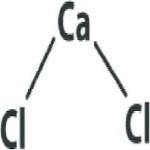
Calcium Carbonate
CAS Number: 471-34-1 Suppliers Exporters, Manufacturers
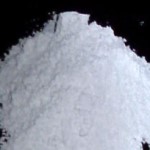
Please visit Safety Data Sheet of Calcium Carbonate BP Ph Eur USP Reagent FCC Food Grade Manufacturers.
Calcium Carbonate USP Grade Specifications:
CaCO3 --- 100.09
Carbonic acid, calcium salt (1:1);
Calcium carbonate (1:1) --- CAS 471-34-1
DEFINITION
Calcium Carbonate, dried at 200C for 4 h, contains calcium equivalent to NLT 98.0% and NMT 100.5% of calcium carbonate (CaCO3).
IDENTIFICATION
A. Identification Tests - General, Calcium: The addition of acetic acid to it produces effervescence (presence of carbonate), and the resulting solution, after boiling, meets the requirements of the tests.
Acid-Insoluble Substances:
Sample: 5.0 g
Analysis: Mix the Sample with 10 mL of water, and add hydrochloric acid, dropwise, with agitation, until it ceases to cause effervescence, then add water to make the mixture measure 200 mL, and filter. Wash the insoluble residue with water until the last washing shows no chloride and ignite and weigh the residue.
Acceptance criteria: NMT 0.2%; the weight of the residue does not exceed 10 mg.
Arsenic: To pass the test. NMT 3 ppm
Barium: A platinum wire, dipped in the filtrate obtained in the test for Acid-Insoluble Substances and held in a nonluminous flame, does not impart a green color.
Iron: To pass the test by Ultraviolet-Visible Spectroscopy.
Lead:
Sample solution: 1.0 g in 5 mL of water
Analysis: To the Sample solution slowly add 8 mL of 3 N hydrochloric acid, evaporate on a steam bath to dryness, and dissolve the residue in 5 mL of water.
Acceptance criteria: NMT 3 ppm
Limit of Fluoride: To pass the test.
Acceptance criteria: NMT 50 ppm
Limit of Magnesium and Alkali Salts: To pass the test.
Acceptance criteria: NMT 1.0%; the weight of the residue is NMT 5 mg.
Mercury: To pass the test.
Acceptance criteria: NMT 0.5 ppm
Loss on Drying: Dry a sample at 200C for 4 h: it loses NMT 2.0% of its weight.
Calcium Carbonate BP Ph Eur Grade Specifications
CaCO3 --- 100
Action and use: Antacid.
DEFINITION
Content: 98.5 per cent to 100.5 per cent (dried substance).
CHARACTERS
Appearance: White or almost white powder.
Solubility: Practically insoluble in water.
IDENTIFICATION
A. It gives the reaction of carbonates
B. 0.2 ml of solution S (see Tests) gives the reactions of calcium
TESTS
Solution S: Dissolve 5.0 g in 80 ml of dilute acetic acid R. When the effervescence ceases, boil for 2min. Allow to cool, dilute to 100 ml with dilute acetic acid R and filter, if necessary, through a sintered-glass filter.
Substances insoluble in acetic acid: Maximum 0.2 per cent.
Chlorides: Maximum 330 ppm.
Sulphates: Maximum 0.25 per cent.
Arsenic: Maximum 4 ppm, determined on 5 ml of solution S.
Barium: To 10 ml of solution S add 10 ml of calcium sulphate solution R . After at least 15 min, any opalescence in the solution is not more intense than that in a mixture of 10 ml of solution S and 10 ml of distilled water R.
Iron: Maximum 200 ppm.
Magnesium and alkali metals: Maximum 1.5 per cent.
Heavy metals: Maximum 20 ppm.
Calcium Carbonate FCC Food Grade Specifications
CaCO3 Formula weight 100.09
CAS: 471-34-1
DESCRIPTION
Calcium Carbonate occurs as a fine, white or colorless, microcrystalline powder. It is stable in air, and it is practically insoluble in water and in alcohol. The presence of any ammonium salt or carbon dioxide increases its solubility in water, but the presence of any alkali hydroxide reduces the solubility.
Function: pH control agent; nutrient; dough conditioner; firming agent; yeast nutrient.
REQUIREMENTS
Identification: A sample dissolves, with effervescence, in 1 N acetic acid, in 2.7 N hydrochloric acid, and in 1.7 N nitric acid, and the resulting solutions, after boiling, give positive tests for Calcium.
Assay: Not less than 98.0% and not more than 100.5% of CaCO3 after drying.
Acid-Insoluble Substances: Not more than 0.2%.
Arsenic: Not more than 3 mg/kg.
Fluoride: Not more than 0.005%.
Lead: Not more than 3 mg/kg.
Loss on Drying: Not more than 2%.
Magnesium and Alkali Salts: Not more than 1%.
Calcium Carbonate Analytical Reagent Specifications
Calcium Carbonate
CaCO3
Formula Wt 100.09
CAS Number 471-34-1
REQUIREMENTS
Assay (dried basis): 99.0% CaCO3 min
MAXIMUM ALLOWABLE
Insoluble in dilute hydrochloric acid: 0.01%
Ammonium hydroxide precipitate: 0.01%
Chloride (Cl): 0.001%
Sulfate (SO4): 0.0015%
Ammonium (NH4): 0.003%
Barium (Ba): 0.01%
Heavy metals (as Pb): 0.001%
Iron (Fe): 0.003%
Magnesium (Mg): 0.02%
Potassium (K): 0.01%
Sodium (Na): 0.1%
Strontium (Sr): 0.1%
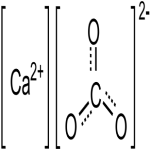
Please visit Hazard Statement of Calcium Carbonate BP Ph Eur USP Reagent FCC Food Grade Suppliers.
Calcium Chloride CAS Number 10043-52-4, 10035-04-8, 7774-34-7 & Calcium Carbonate CAS Number 471-34-1 Supplier Exporter, Manufacturer:
Annie Chemie P Ltd
Mumbai 4000010, INDIA
With Agents and offices in UAE, USA, Europe.
e-mail: info@anniechemie.com
Copyright and Usual Disclaimer is Applicable.
June 3, 2025
Exporters to USA, Canada, UK, Europe, UAE, Nigeria, Algeria, Turkey, Mexico, Brazil, Chile, Argentina, Australia, Dubai etc.
Perfection is made up of small things and that is a big thing.
